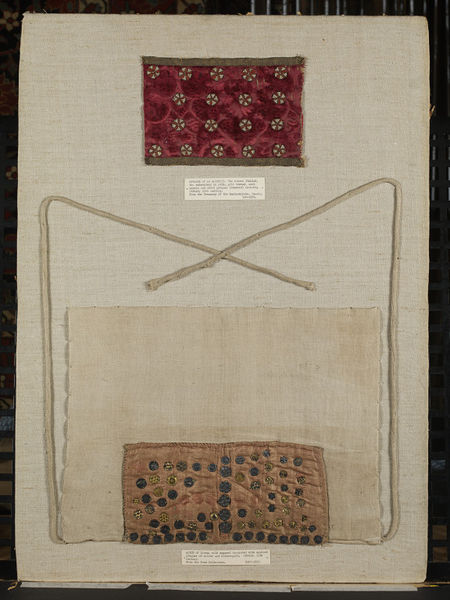 |
| 13th C. Amice Line Drawing |
While the simple drawing I have made above is rectangular there is proof that the measurements for this item varied. The armice supposedly belonging to St. Thomas of Canterbury is square with the apparel (or decoration) running the length of one side. An existing armice located at the V&A museum is more like my drawing to the left. I have included the picture of it from the V&A collections below. At the moment I have no idea what the red thing is. It is folded and you cannot see it well but it is rectangular in shape and has a much smaller apparel. The label reads as follows: “Armice, linen, with crimson silk apparel on which are sewn ornaments in silver and silver gilt. German, fifteenth century, 4 ft. 2 in. by 2 ft.” I have also found an image of an amice being worn with the direction that the right side was always to be worn crossed over the left. I’m not sure how accurate that is but neat to see a modern picture!
 |
| 15th C. German Armice |
 |
| Modern day armice |
*Mary G. Houston, Medieval Costume in England and France: The 13th, 14th and 15th Centuries (New York: Dover, 1996) 23.
**Thurston, Herbert. “Amice.” The Catholic Encyclopedia. Vol. 1. New York: Robert Appleton Company, 1907. 29 Jul. 2011
*** JPSONNEN. “The Roman amice: how to vest…” Orbis Catholicvs. Orbis Catholicvs. 28 July 2008. Web. 29 July 2011.


